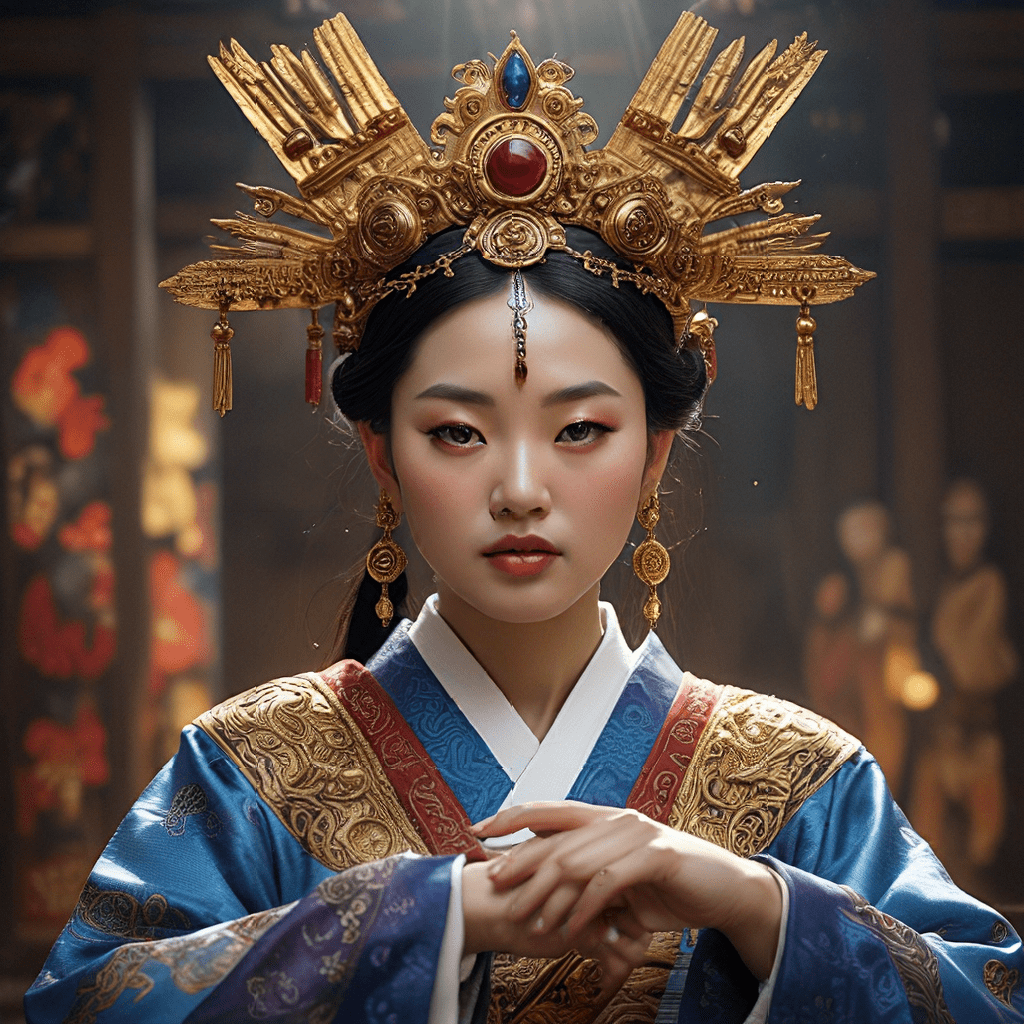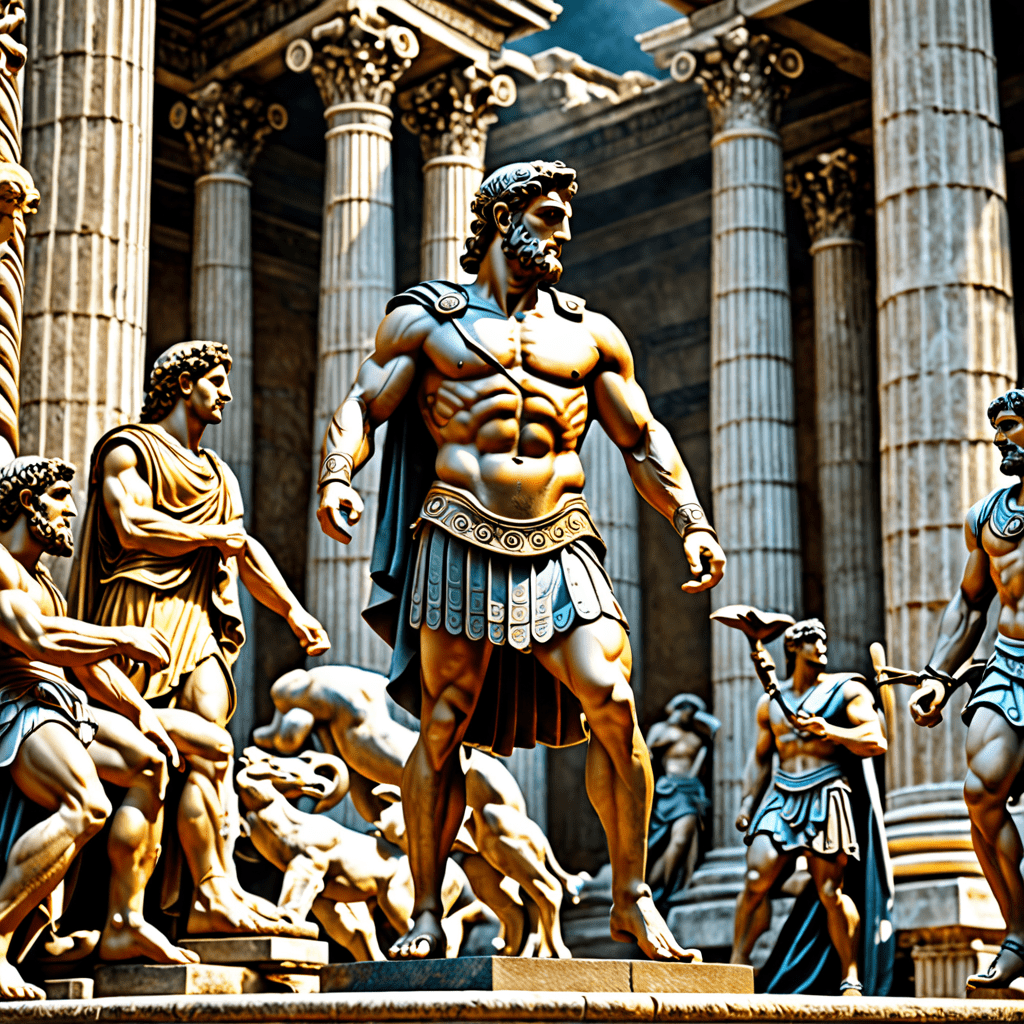Filipino Mythology: A Tapestry of Survival and Resilience
Delve into the captivating world of Filipino mythology and uncover a rich tapestry of stories that reflect the resilience and spirit of the Filipino people. From tales of creation to encounters with mythical creatures, Filipino mythology offers a unique window into the cultural heritage and beliefs of the islands. These stories not only entertain but also offer profound insights into the values, traditions, and worldview of the Filipino people.
Origins and Influences
Filipino mythology is a vibrant blend of indigenous beliefs and external influences. The roots of Filipino mythology can be traced back to the pre-colonial era, where animistic beliefs were prevalent. Filipinos revered the forces of nature, believing in spirits that inhabited mountains, rivers, and forests. These spirits, known as "diwata" or "engkanto," were often seen as benevolent beings who protected the natural world and its inhabitants.
The arrival of foreign influences, particularly from Spanish colonization, played a significant role in shaping Filipino mythology. Christianity introduced new deities and stories, which were often blended with existing indigenous beliefs. This fusion resulted in a unique and complex system of beliefs that continues to influence Filipino culture today.
The Power of Nature: The Gods and Goddesses
The Filipino pantheon is diverse and reflects a deep reverence for the power of nature. One of the most prominent deities is Bathala, the supreme creator god, who is associated with the sky and the stars. Other important deities include:
- Lumawig: The god of agriculture and fertility, who is often depicted as a benevolent and wise figure.
- Mayari: The goddess of the moon and beauty, known for her grace and elegance.
- Apolaki: The god of the sun and war, symbolizing strength and power.
- Agni: The fire god, who is considered to be a powerful and dangerous force.
These deities, along with their associated myths and legends, provide insights into the values and beliefs of the Filipino people, emphasizing the importance of respect for nature and the interconnectedness of all living things.
Tales of Creation and the Beginnings of Humanity
Filipino mythology offers several fascinating tales of creation, each providing a unique perspective on the origins of the universe and humanity. One popular story tells of Bathala, the creator god, who formed the islands of the Philippines from a giant egg. Another story recounts the creation of humanity from clay, shaped by the hands of a powerful deity.
These creation myths highlight the importance of the human relationship with nature and the divine. They serve as a reminder of the interconnectedness of all things and the responsibility of humanity to care for the world around them.
Mythical Creatures: Guardians and Symbols of the Natural World
Filipino mythology is teeming with fantastical creatures, each embodying different aspects of the natural world and serving as guardians of specific environments.
- Kapre: The tree giant, often depicted as a large, strong figure with glowing red eyes. They are believed to reside in trees and are said to be protectors of the forest.
- Tikbalang: The horse-like creature with a human head, often associated with mischief and trickery. They are believed to be guardians of crossroads and are said to lure travelers astray.
- Manananggal: A vampiric creature that detaches its upper torso from its body, allowing it to fly and attack its victims. They are said to be a symbol of the dangers of the night and the importance of staying vigilant.
- Aswang: A shapeshifting creature that can take the form of a human or an animal. They are often associated with witchcraft and evil.
These mythical creatures add a layer of mystery and wonder to the Filipino landscape, enriching the cultural heritage and providing a source of storytelling and entertainment.
The Importance of Ancestors and Spirits in Filipino Culture
Filipino mythology places a profound emphasis on the role of ancestors and spirits in the lives of the living. The concept of "kaluluwa," or soul, is central to Filipino beliefs. Upon death, the soul is believed to journey to the afterlife, where it may interact with the spirits of ancestors and other beings. Filipinos believe that their ancestors continue to watch over them and influence their lives, offering guidance and protection. Respect for ancestors is deeply ingrained in Filipino culture, and rituals and ceremonies are often performed to honor their memory and seek their blessings.
The spirits of ancestors are often seen as intermediaries between the living and the divine. They may be called upon for help in times of need, or they may be consulted for guidance and advice. The importance of ancestors and spirits is reflected in numerous customs and traditions, including the practice of offering food and gifts to the dead, building ancestral homes, and preserving family genealogies. These practices serve to maintain a connection with the past and ensure that the wisdom and values of ancestors are passed down to future generations.
Tales of Resilience: Overcoming Adversity and Embracing Change
Filipino mythology is rich with tales of resilience, illustrating the ability of the Filipino people to overcome adversity and embrace change. These stories often feature characters who face difficult challenges and emerge victorious, demonstrating courage, resourcefulness, and the power of human spirit.
One such story is the legend of "Juan Tamad," a character who is often portrayed as lazy and irresponsible. However, despite his flaws, Juan Tamad often manages to find creative solutions to problems, using his ingenuity and wit to outsmart his adversaries. This tale reflects the Filipino belief in the power of resourcefulness and the importance of embracing one's individuality.
Another example is the story of "Lam-ang," a legendary hero who embodies the values of courage, strength, and loyalty. Lam-ang is known for his bravery in battle and his unwavering determination to protect his loved ones. His story serves as a source of inspiration for Filipinos, reminding them of the importance of standing up for what is right and fighting for what they believe in.
The Role of Myth in Shaping Filipino Identity
Filipino mythology plays a vital role in shaping the cultural identity of the Filipino people. These stories provide a shared history and a sense of belonging for Filipinos, connecting them to their ancestors and their heritage. They also offer insights into the values, beliefs, and worldview of the Filipino people, providing a framework for understanding their unique perspective on the world.
Moreover, Filipino mythology serves as a source of inspiration and motivation, reminding Filipinos of their resilience, their ability to overcome challenges, and their commitment to their community. The tales of heroes, deities, and mythical creatures provide a rich tapestry of storytelling and folklore that continues to be passed down through generations, preserving the cultural heritage of the Filipino people.
Theories of Filipino Mythology: Tracing the Threads of Cultural Memory
Understanding the origins and evolution of Filipino mythology is crucial for appreciating its cultural significance. Scholars have proposed various theories to explain the development of these stories, highlighting the influence of different cultural factors and historical events.
One theory suggests that Filipino mythology originated from animistic beliefs, where spirits were believed to inhabit the natural world. This theory emphasizes the importance of nature in Filipino culture and the reverence for the forces that govern it. Another theory points to the influence of Austronesian mythology, suggesting that many Filipino myths share common themes and characters with other Austronesian cultures.
Additionally, the arrival of Spanish colonization in the 16th century had a significant impact on Filipino mythology. The introduction of Christianity led to the blending of indigenous beliefs with Christian doctrines, resulting in a unique and complex system of beliefs. Understanding the interplay of these influences helps to illuminate the development of Filipino mythology over time.
Contemporary Manifestations of Filipino Mythology
Filipino mythology continues to thrive in contemporary society, finding expression in various forms of art, literature, and popular culture. These modern manifestations demonstrate the enduring power of these stories and their relevance to contemporary Filipinos.
For example, Filipino films, television shows, and novels often draw inspiration from mythology, incorporating elements of folklore into their narratives. These works often explore themes of identity, belonging, and the enduring spirit of the Filipino people. Additionally, Filipino artists use mythological themes and imagery to create unique and thought-provoking works of art.
The continued relevance of Filipino mythology in contemporary society reflects the cultural importance of these stories and their ability to resonate with Filipinos of all ages and backgrounds. They provide a source of inspiration, entertainment, and a sense of connection to the rich cultural heritage of the Philippines.
FAQs
What is the main takeaway from Filipino mythology?
Filipino mythology emphasizes the interconnectedness of humanity with nature and the spirit world, highlighting the importance of resilience, respect for ancestors, and the embrace of one's cultural heritage.
What are the most popular creatures in Filipino mythology?
Some of the most popular creatures include the Kapre, Tikbalang, Manananggal, and Aswang, each embodying different aspects of nature or human nature.
How is Filipino mythology relevant today?
Filipino mythology continues to inspire artists, writers, and filmmakers, offering insights into Filipino identity, values, and traditions. It provides a sense of cultural connection and serves as a source of inspiration and entertainment.
What is the role of Bathala in Filipino mythology?
Bathala is the supreme creator god, often associated with the sky and stars. He is responsible for the creation of the universe and humanity.
How does Filipino mythology reflect the impact of colonialism?
The arrival of Spanish colonization resulted in the blending of indigenous beliefs with Christian doctrines, contributing to the unique and complex nature of Filipino mythology.



